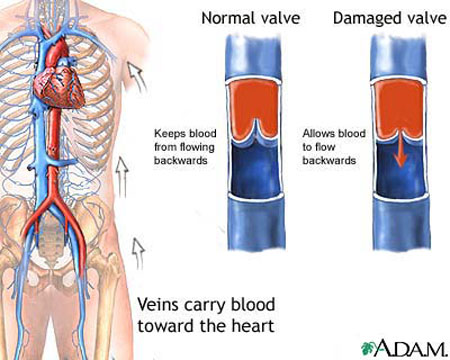Chronic Venous Insufficiency - symptoms and treatment

What is chronic Venous Insufficiency and Symptoms
Venous insufficiency is a chronic condition in which the veins cannot adequately return BLOOD to the HEART, usually as a consequence of defective valves that allow blood to leak back and pool in the veins. Some people do not have valves in their veins, a circumstance that is a CONGENITAL ANOMALY. Venous insufficiency primarily affects the veins in the legs, especially the lower legs, and may accompany or contribute to VARICOSE VEINS. Symptoms include edema and characteristic changes in SKIN color and texture (lipodermatosclerosis). Many people who have venous insufficiency experience discomfort, such as burning or itching, and cramping in the lower legs, and may have frequent skin ulcers that are slow to heal. The diagnostic path may include Doppler ULTRASOUND or VENOGRAM to evaluate the flow of blood through the veins.
Chronic Venous Insufficiency Treatment
Treatment is conservative and supportive to the extent possible, including compression stockings to help support the veins and intensify the action of the leg muscles with walking. Frequent walking massages the veins, helping move blood upward toward the heart. Resting with the legs elevated above the level of the heart counters the effect of gravity on returning blood flow. Surgery may become necessary when skin ulcers fail to heal with treatment, or PAIN becomes intense. Surgical options include VEIN ligation (commonly called vein stripping) and vein grafts to reroute blood around severely damaged veins.
See also DEEP VEIN THROMBOSIS (DVT).